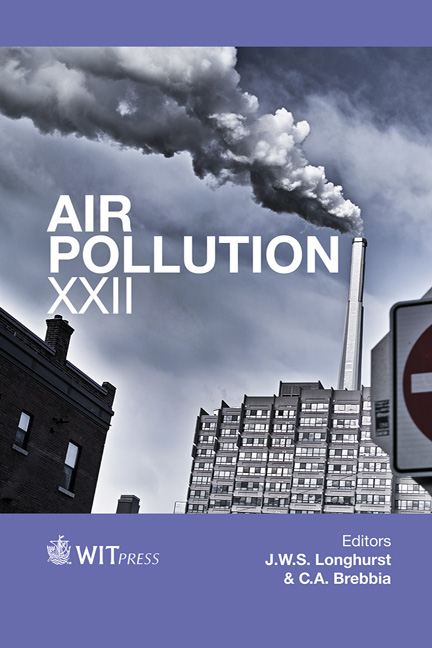Study On The Size-segregated Distribution Of 37 Species Of Polycyclic Aromatic Hydrocarbons In Urban Atmospheric Fine Particles Of Japan
Price
Free (open access)
Transaction
Volume
183
Pages
13
Page Range
131 - 143
Published
2014
Size
401 kb
Paper DOI
10.2495/AIR140111
Copyright
WIT Press
Author(s)
Q. Wang, K. Kobayashi, M. Zhou, S. Lu, S. Dong, D. Nakajima, K. Sekiguchi & M. Terasaki
Abstract
The size-segregated distribution and seasonal concentrations of polycyclic aromatic hydrocarbons (PAHs) in urban suspended particulate matter (SPM) at the Japan national route 463 in the urban of Saitama city, Japan were investigated using an Andersen high-volume air sampler. Air sampling was carried out from June 2013 to January 2014. 37 species of toxic PAHs such as benzo[j]aceanthrylene, dibenzo[a,h]anthracene, benzo[c]fluorene and dibenzo[a,l]pyrene were measured. It was found that the average concentration of 37 species of particulate PAHs including methyl-PAHs, benzothiophenes and oxy-PAHs from atmospheric oxidation of PAHs collected in the urban of Saitama city was 3.42 to 6.51 ng/m3 during 2013 sampling campaign periods. 1,8-naphthalic anhydride (1,8-NA) showed the highest concentration among 37 species of PAHs. The concentrations of high molecular PAHs, which were found in all seasons, followed different size distribution, especially with the highest peak in fine particle sizes around 1.1 μm. The concentrations of low-molecular PAHs were not much different with particle sizes. The toxicity analysis indicated that the carcinogenic potency of particulate PAHs primarily existed in the particle size below 1.1 μm. 37 species of PAHs in urban atmospheric fine particles were not only derived from vehicle emission with long range transportation, but also produced by local other anthropogenic sources.
Keywords
suspended particulate matter, size distribution, PAHs, toxicity.





